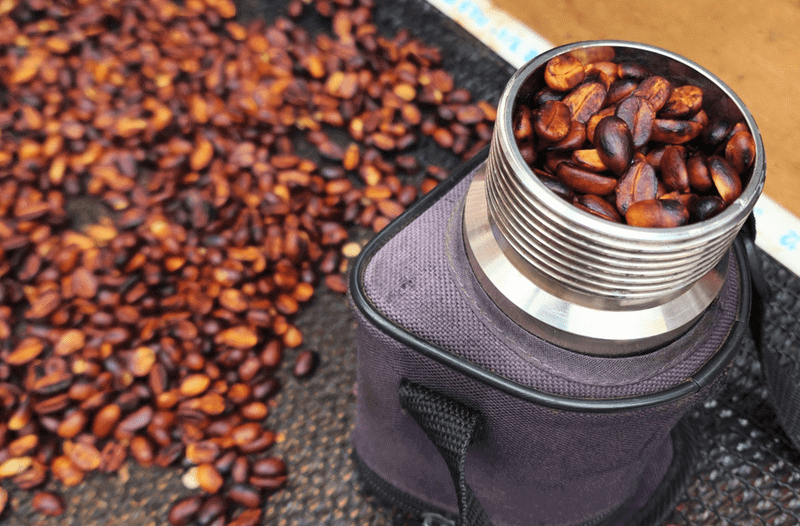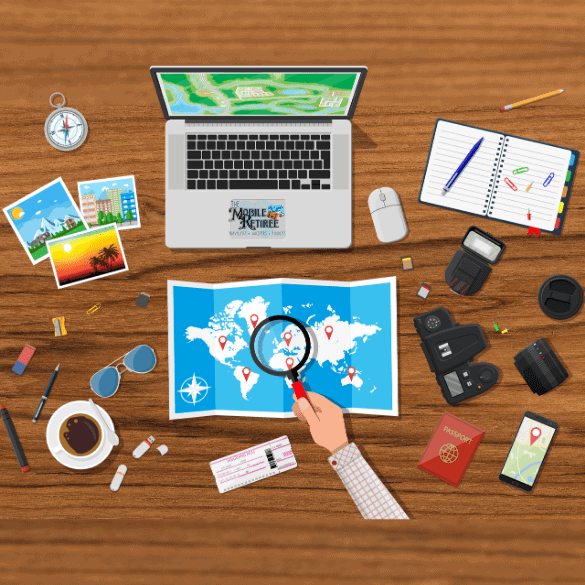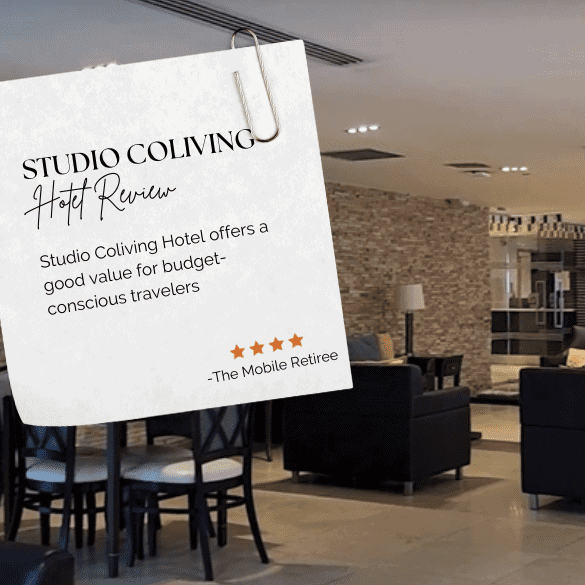Our Visit to the Biomuseo – A Guide to Panama’s Natural History Museum
On our trip to Panama City, we visited Panama City’s natural history museum, a Frank Gehry-designed marvel that’s become a city icon. We usually do some research beforehand but after our visit to the Punta Culebra Nature Center we just headed back up the Amador Causeway and ended up at the Biomuseo.
Let’s just say my initial guess of recycling exhibits was way off the mark! Instead, we found ourselves on a fascinating and interactive explanation of Panama’s dramatic formation and its lasting impact on the world’s ecosystems. Curious? Let’s take a closer look at what the Biomuseo offers and why it deserves a spot on your Panama City adventure.
PLAN YOUR TRIP WITH OUR FAVORITE RESOURCES
Book Hotels: Expedia,Booking
Flight Deals: DailyDrop
Book Flights: Skyscanner, Google Flights
Book Tours: GetYouGuide, Viator
Reserve a Rental Car: Discover Cars
Travel Insurance: VisitorsCoverage, SafetyWing
Stay Connected: Airalo, local SIM
What is the Biomuseo?
As mentioned earlier, we didn’t do much advance research on the Biomuseo, several people had mentioned it as a great museum so we made the decision to stop in without even knowing what we were going to see.
I honestly thought it had something to do with recycling and renewable energy technology up until the morning of our visit, but it’s nothing of the sort. The Biomuseo is a fascinating museum focused on the natural history of Panama, particularly how the formation of the Panamanian isthmus millions of years ago dramatically impacted the world’s ecology.
Designed by renowned architect Frank Gehry, the building itself is a work of art, with its colorful, curving panels supposedly resembling fish scales.
At the time of our visit the museum was open only on Saturday and Sunday – but then again our visit was in November of 2023 and marked by frequent and widespread protests that impacted travel and commerce.
Getting There
Biomuseo is located on the Amador Causeway, at the south entrance of the Panama Canal. You can get there via taxi, rideshare or bus.
We were coming from kind of the other end of town – our hotel was on the edge of the financial district – so we got an Uber to Punta Culebra Nature Center (since it’s near the far end of the causeway) and then summoned up a driver to carry us up the causeway to the Bio Museum after we finished there.
(The three trips combined (to/from hotel and from Punta Culebra Nature Center to the Biomuseo) totaled up to about US$16 including a $1 tip on each leg of the journey.)
If you’re on a tighter budget or if you’re in better shape than we are, it’s just over a 2 mile walk between the Punta Culebra Nature Center and the Biomuseo. Auntie Google thinks it’ll take 46 minutes to walk. We considered the Panamanian heat and humidity and figured the Uber was well worth the $4.
Tips for Planning Your Biomuseo Visit
- Tickets: Purchase tickets online or at the museum entrance. No reservations necessary.
- Audio Guides: You can connect to the museum’s free wifi and access the free audio guide (available in multiple languages) from the Biomuseo website (https://biomuseo.org/) Each spot marked on the floor has a narration.
- Bring Headphones: Bring your own headphones or earbuds to enjoy the audio guides and make sure they are fully charged (a typical visit takes 2-3 hours). (Sandra’s earbud ran out of power just after the The Living Web exhibit)
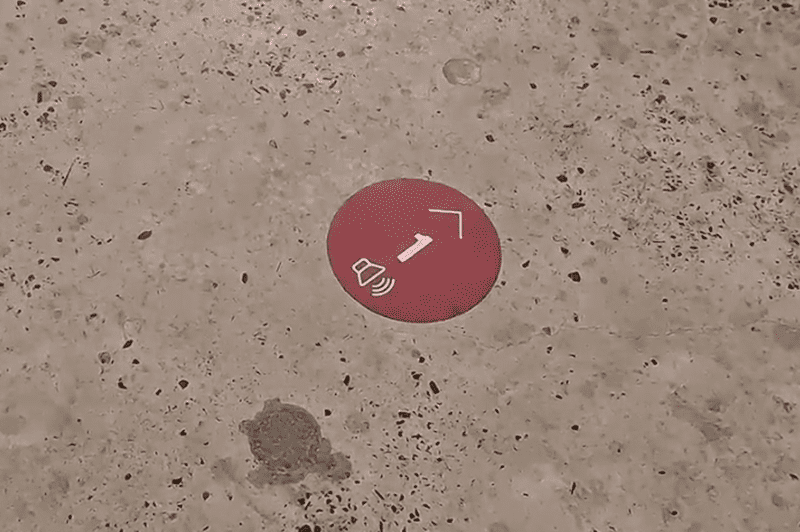
Bonus Tip for visiting the Biomuseo
Listen to the audio guides BEFORE you visit, you can familiarize yourself with the exhibits (in your preferred language) beforehand and get a sneak peek at the exhibits
A Note about accessibility at the Biomuseo
We did notice that the Biomuseo offers wheelchair access in the plaza area however parts of the garden path may be a little iffy (misaligned flagstones and rough gravel surfaces in some areas) but if you need assistance, you can reach the museum at consultas@biomuseo.org or at +507 65088349
How much does it cost to go to the Biomuseo in Panama City?
We paid the non-resident senior entry fee of $16 each and I think that’s very fair.
What is inside the Biomuseo?
#1 Biomuseo Café
It was already midday after our walk around the Punta Culebra Nature Center early and it was time for bebidas frios and a little snack so we started our tour of the museum in the café located inside the museum plaza.
The mini baguettes with jamon serrano (nearly prosciutto but there’s a technical difference in the aging process) and muenster cheese worked out perfectly. The fruit juices (jugos de naturale is what you want to look for all over Panama) were excellent and the total was US$14.14 which is WAY better value than any other museum cafés we’ve visited.
Now suitably fortified, we set off into the museum. First we bought our tickets, connected to the WiFi network, pulled up the biomuseo.org website and found the audio guides (available in multiple languages). There are numbers on the floor throughout the museum (starting before you walk inside and continuing all the way through the Park of Biodiversity of the Biomuseo).
#2 Biodiversity Showcase
The first gallery is an introduction to Panama’s amazing natural heritage. The gallery gives the visitors a sense of the magnitude of Earth’s biodiversity, which is still being discovered.
The exhibits and displays discuss not only the variety of biodiversity in Panama but the origins and the impacts of development.
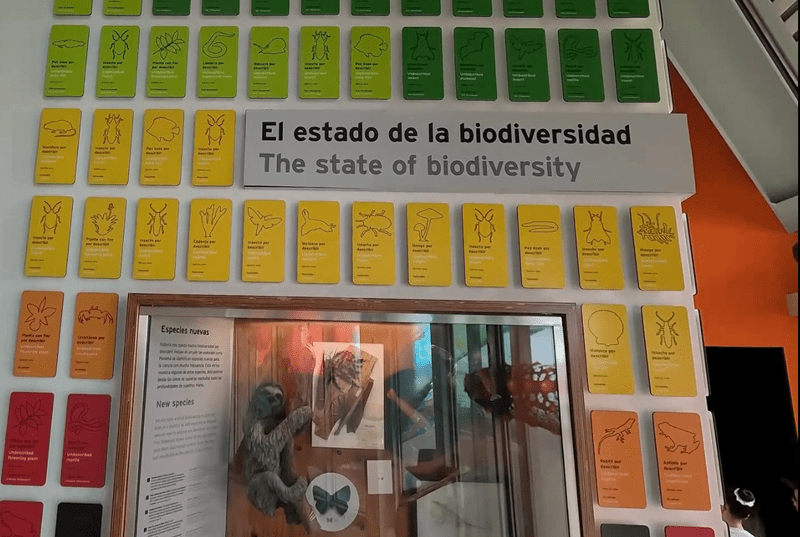
#3 Panamarama
After the Biodiversity Showcase you’ll come the Panamarama exhibit. If you’ve seen one museum “movie” you’ve seen them all, right? Wrong! This one is pretty darn cool! It is a small room where you are surrounded on 5 sides (ceiling, three walls and under the glass floor) with a stunning immersive displays of Panama’s diverse ecosystems. (No photos as its a small space, that logistically, you just can’t be captured sufficiently with a phone’s camera. )
Insider Tip: I would suggest that if the “movie” is already in progress when you get to the entrance of the Panamarama room, wait until it is ready to restart. It’s only about six minutes long and there is a 2 minute pause between showings. It will be far more impactful to watch it start to finish. If you need to kill a couple minutes go take another look at the massive Harpy Eagle carving up above the window just after you enter the Biodiversity Showcase
#4 The Bridge is Born
There is some good information on the geology of the area and the formation of the isthmus with some interactive video display and a lot of racks. Some of the rock display cases have magnifiers on them. I’m not super into geology so I didn’t find the glass cases full of rocks to be very interesting but Sandra did.
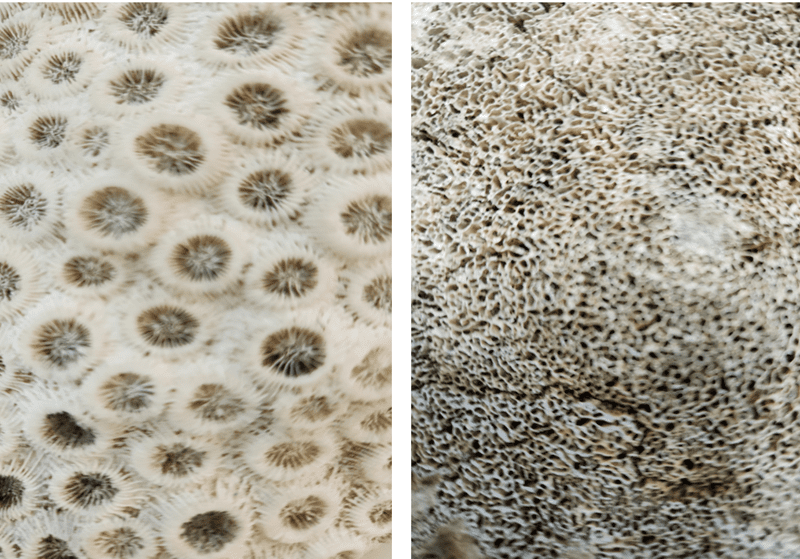
#5 The Great Exchange
There is also a great section on the animal history of the region including life-size displays of a wide variety of species and accompanied by very thorough video/audio displays. The screens offer information in Spanish or English and let you see more or less detailed information as you choose.
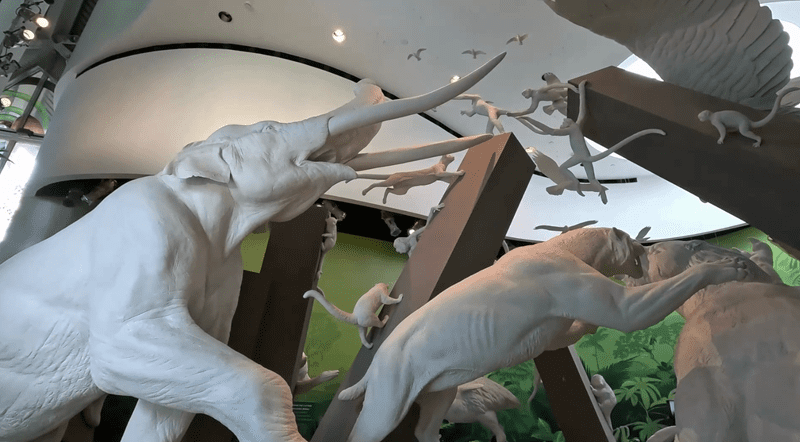
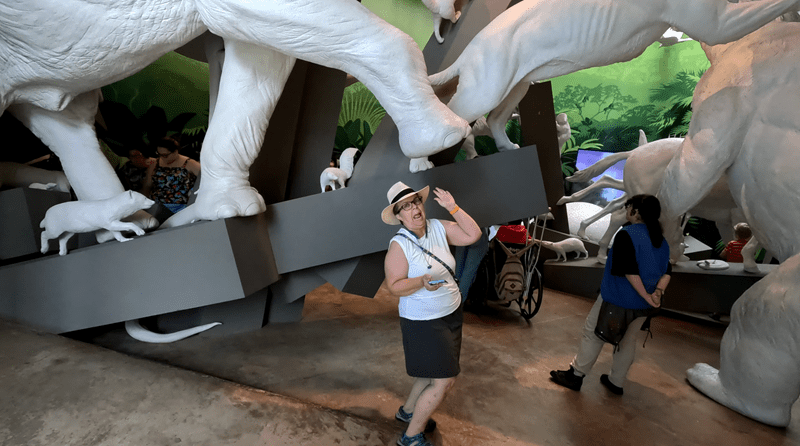
#6 Temporary Exhibit: Los Bosques, Del Darien
At the time of our visit there is an area of temporary exhibits near to the café. It’s tribute to the more primary forests that extend along the coasts, rivers and mountains of the Darién, and to the individuals and communities that work tirelessly to protect the forest. Sadly it wasn’t very well marked, in fact, we missed it the first time we walked by the doors. Sandra only found it because she saw a school group being rotated in and out of the doors and went to see what was up.
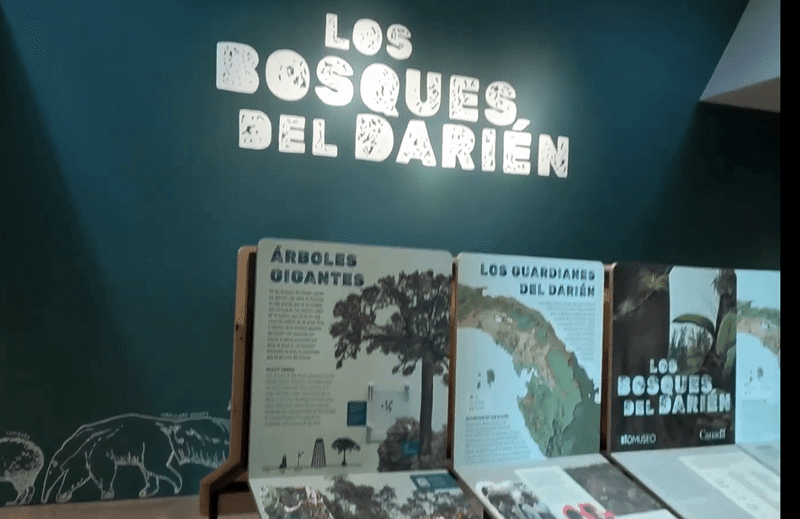
#7 Oceans Divided
Two massive semi-cylindrical aquariums (10 meters high) show how the Pacific and the Caribbean evolved drastically differently when separated by the emergence of the isthmus. We happened to get there at feeding time for one of the huge tanks so that was kind of cool, too.
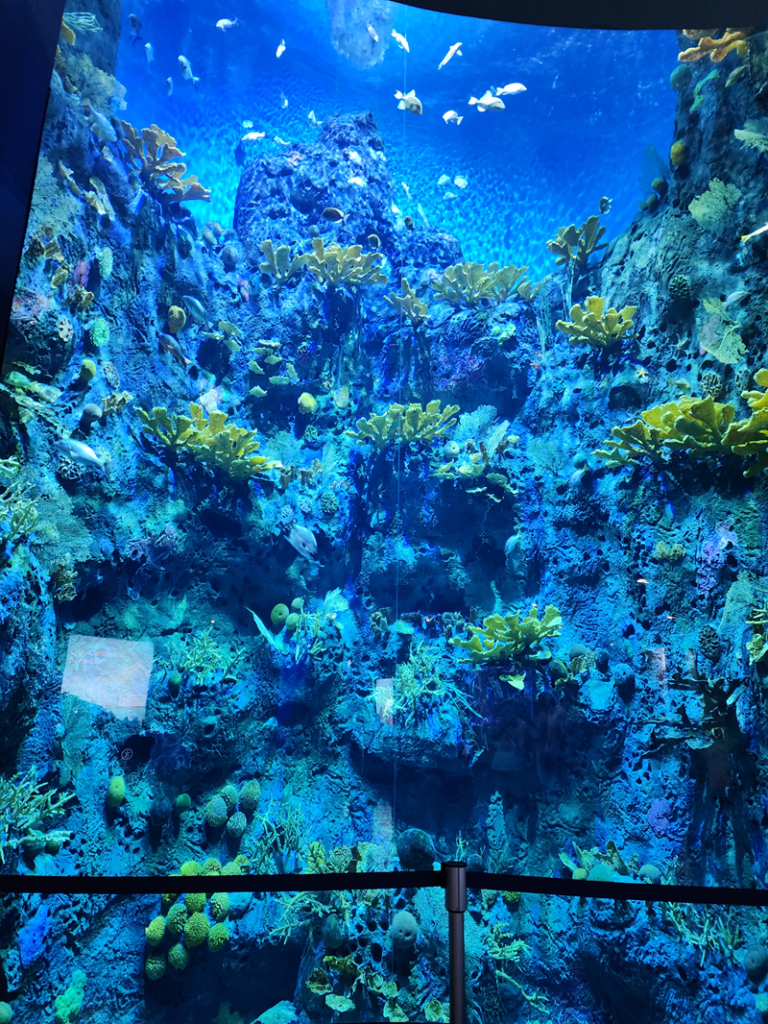
#8 The Human Path
In a space partially open to the outdoors, 16 columns provide information about the relationship between human activity and the natural scenarios of Panama throughout time. Following the audio tour can be tricky because the column numbers aren’t well-placed. We found some of the columns to be numbered but not on the side we would have expected to start and a couple of the columns has no numbers at all. For example the (unnumbered) column 11 is also emblazoned with ‘Your story begins here’ but it’s not the first column in the audio tour. Note the circled ‘1’ in that picture – each group of columns is numbered in the order to view them
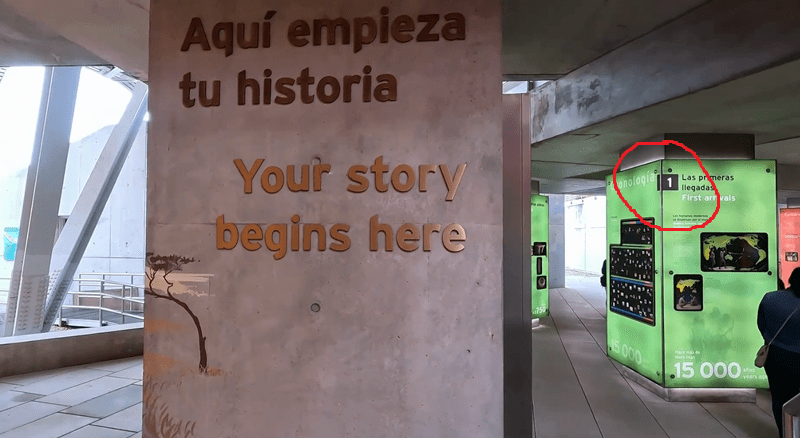
But the numbers to follow along in the audio guide are placed ABOVE the information displays
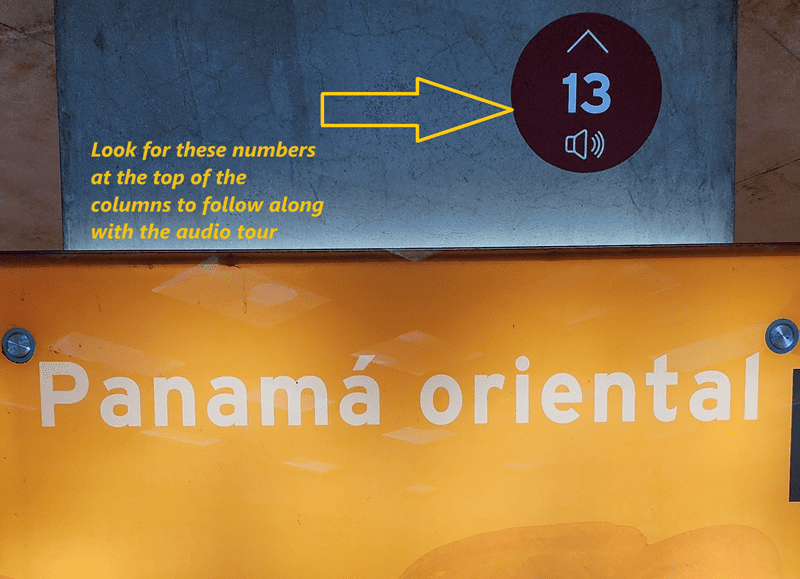
#9 The Living Web
This massive 15-meter sculpture demonstrate how plant, animal, insect and microorganism need, and compete, with each other in complex and invisible ways.
#10 Panama is the Museum
This interactive exhibit allows visitors to explore the relationship between Panama’s cultural and ecological diversity.
#11 The Park of Biodiversity
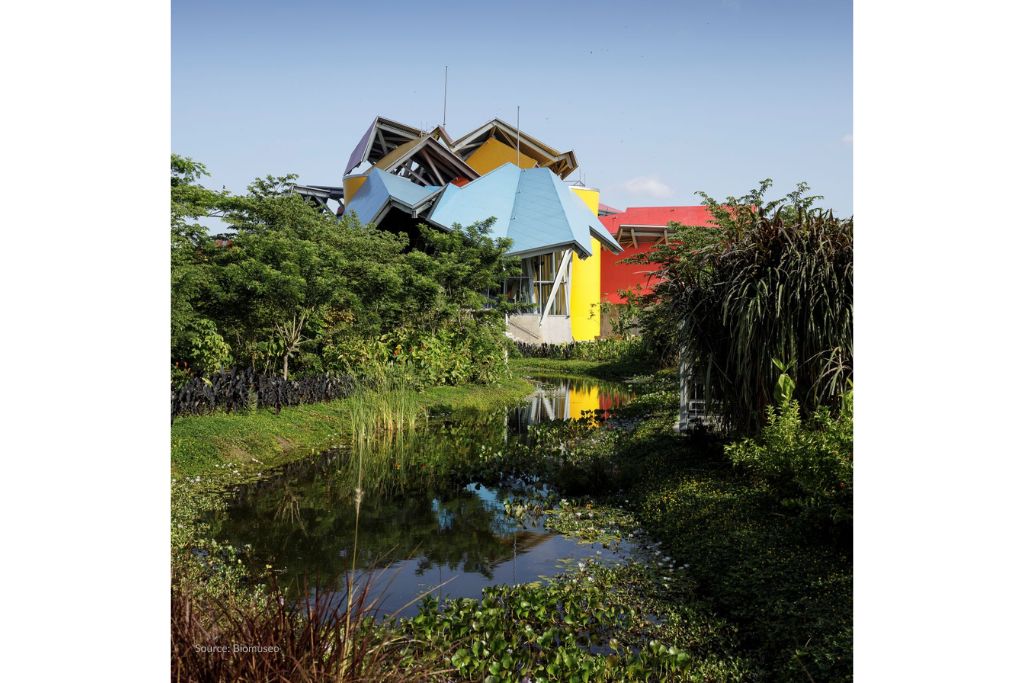
Tip: I’ll just throw in a logistics note about the garden here because this was not immediately obvious to me: The main entrance to the museum (where you’ll arrive by car or bus) is on the Amador Causeway. The garden starts at the back side of the museum and wraps around both sides of the Biomuseo. So you go out the back of the plaza, down a ramp, turn left then left again onto the flagstone path, that’ll bring you around tot he front of the museum and back out to the Causeway. To continue the tour of the park, walk across the front of the museum until you come to another flagstone path and turn left again on the flagstone path. The image shows the direction of travel, and very roughly the path you’ll follow.

Video Highlights of our visit to the Biomuseo and Panama
Is the Biomuseo Worth visiting?
If you’re planning a trip to Panama City, we definitely suggest you should consider adding the Biomuseo to your itinerary. You might just surprise yourself with how much you discover about this dynamic country and its role in shaping global ecosystems.
Happy and Safe Travels!

Support independent travel writers
Love our travel stories? Be part of our journey! Help us brew up more travel tales and support independent content creators like us, Buy Us A Coffee. We’ll give you a shout out in one of our videos! Click the cup to show your support!




 Subscribe to our channel
Subscribe to our channel